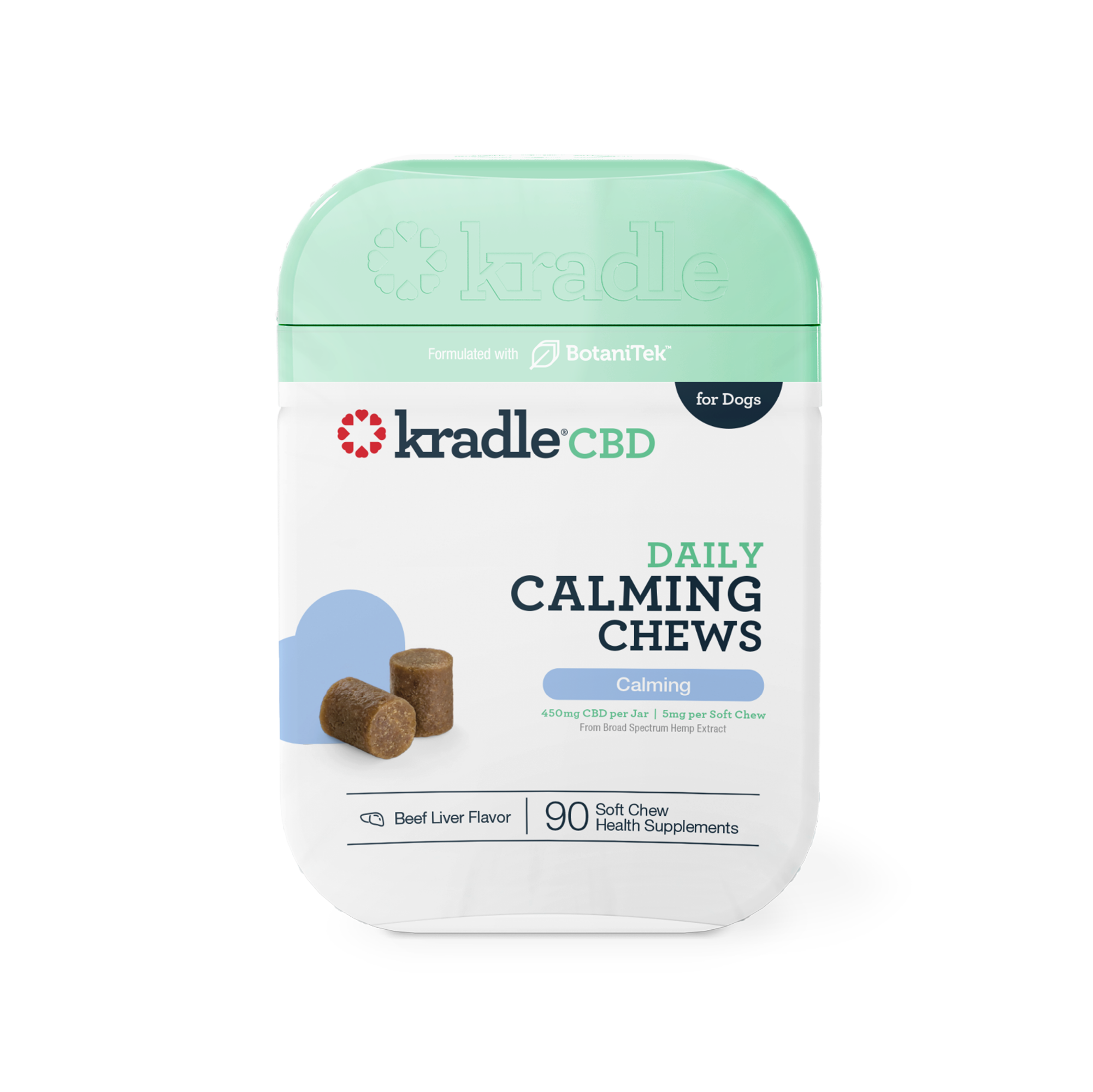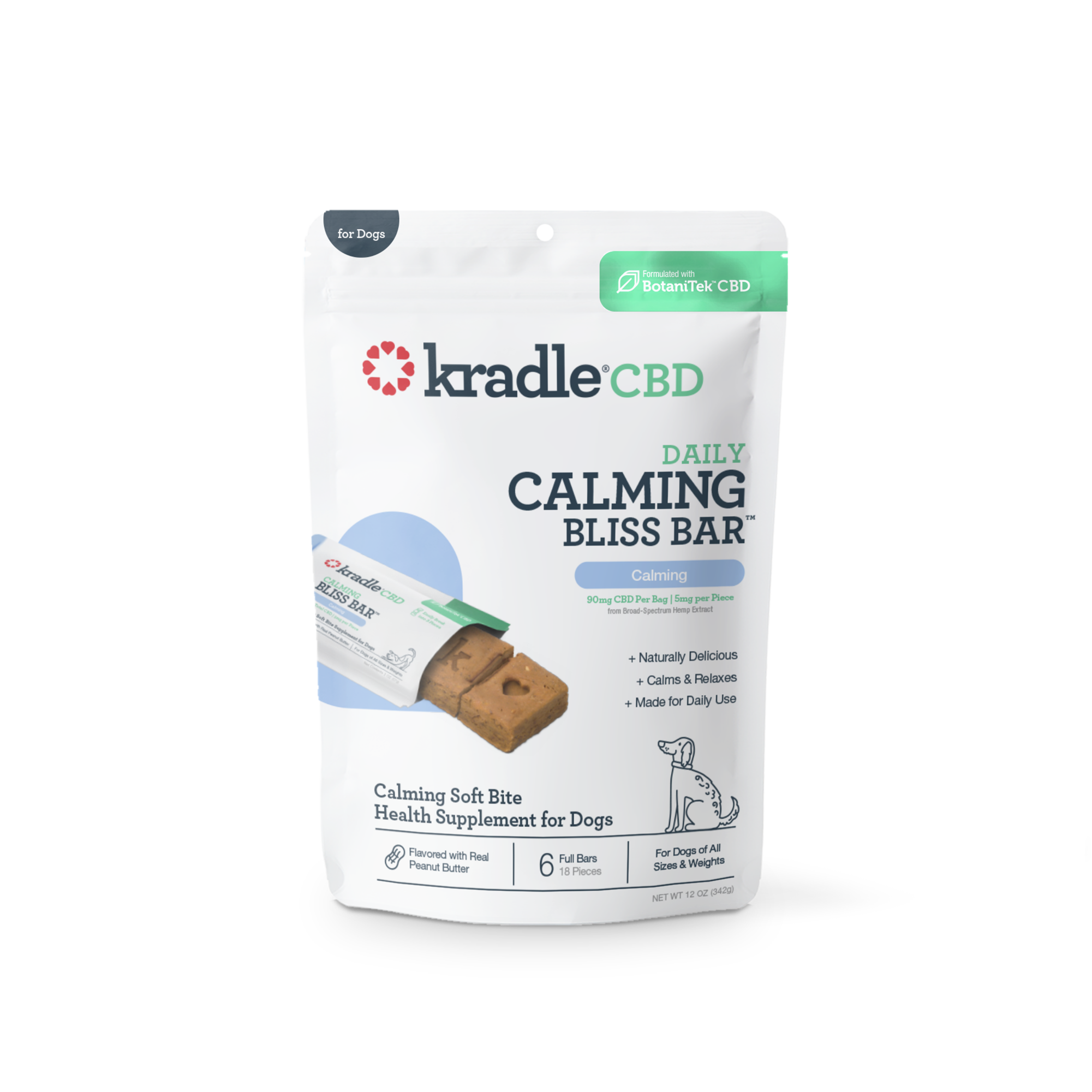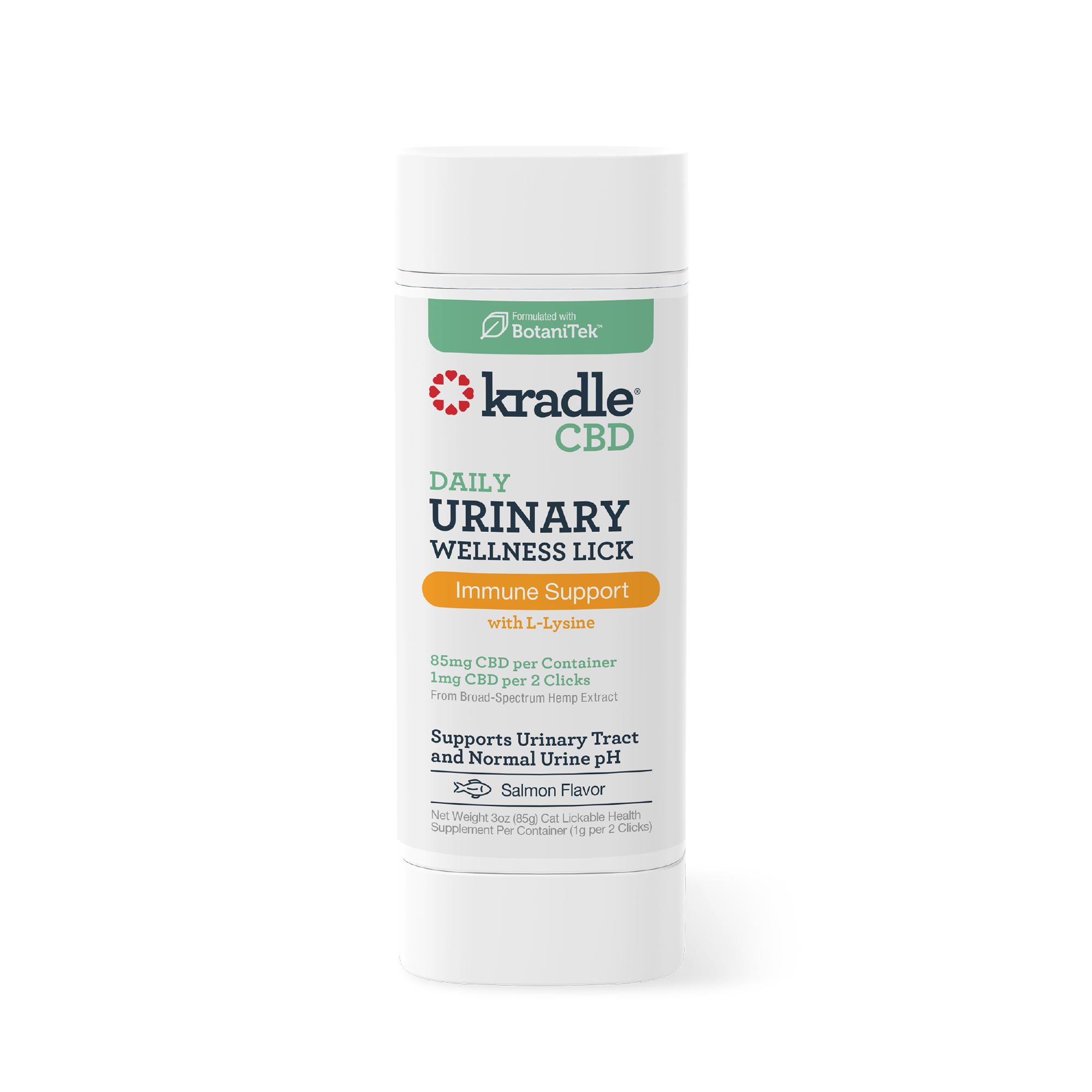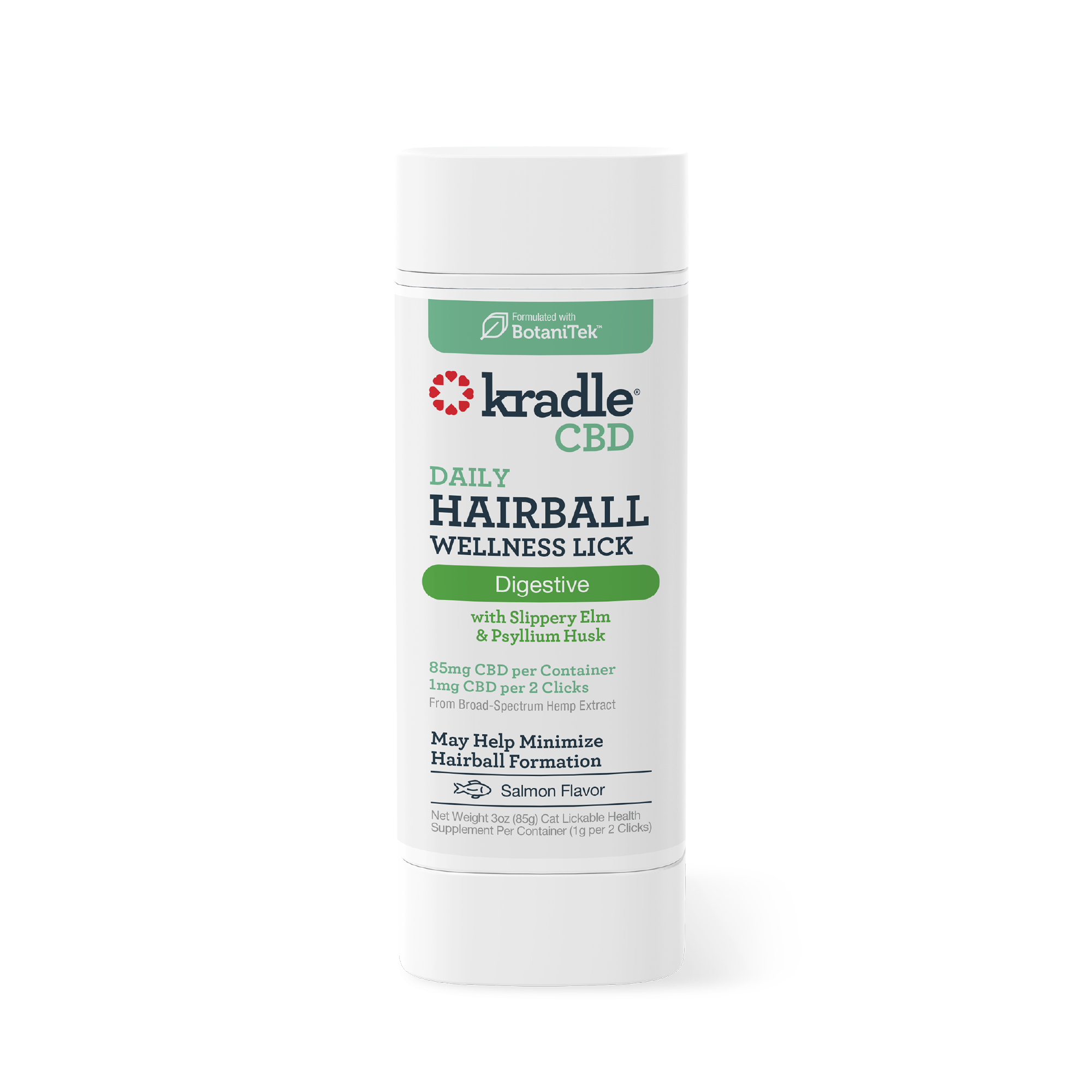
5 Takeaways to Navigate Pet CBD Products for Parents
The cannabidiol (CBD) pet product category is not just surging in popularity, it’s forging a whole new territory. 2019 brought a 10-fold growth in the pet CBD market over 2018, according to a recent report by Brightfield Group, a consumer insights firm based in Chicago. While that’s all good for the business, the growth has created a murky terrain for consumers with inconsistent standards, misunderstood terminology and a lack of consumer education.
In a recent feature story published online last week, pet industry expert resource Pet Product News shared a comprehensive summary covering the regulations that are important for retailers and pet parents to understand as they seek to leverage the calming benefits of CBD products for dogs.
Our own Lee Mayberry, Chief Quality and Regulatory Affairs Officer for the Kradle brand, was one of several experts cited in this online story. Mayberry helped develop the hemp benchmark standards for Whole Foods Market, the nation’s premier natural grocer, and he has been tracking the regulatory landscape for years.
He believes a combination of contacts helps put Kradle in a unique position to monitor a state-by-state regulatory matrix. As Kradle’s regulatory chief, he maintains relationships with several key industry associations such as the National Animal Supplement Council (NASC) and the American Herbal Products Association (AHPA), as well as additional industry thought leaders.
As the expert voice of CBD calming solutions for dogs, we wanted to share five important call-outs from this article to help pet parents stay abreast of the efforts underway to help keep our dogs safe, happy and calm:
#1 — Regulations benefit consumers, the article noted, because the upside is that regulations tend to eliminate those who are selling inferior products or misrepresenting their products and helps ensure consumers receive quality products.
#2 — CBD is a confusing term for consumers. The article notes “Mention ‘CBD’ and a slew of related words may come to mind, such as hemp, cannabis and marijuana. Consumers may be well aware of such terminology, but industry insiders are finding that many people don’t have a grasp on the important distinctions of each term.” In the article, Kradle’s Mayberry broke it down:
- CBD is the nonpsychoactive compound that is extracted from the hemp plant, providing the many benefits we see today.
- Hemp is the term used to identify cannabis plants that contain 0.3 percent tetrahydrocannabinol (THC) or less. THC is the psychoactive ingredient that provides the “high.”
- If the plant has more than 0.3 percent THC, then it is commonly referred to as marijuana.
- Cannabis is the scientific term (genus) that all these plants are identified as, regardless of THC levels.
#3 — Hempseed oil is not CBD and often it’s positioned in products as having the same benefits, but it does not. There are a lot of products available at online and brick-and-mortar retailers that contain hempseed oil, but improperly make CBD claims. Read the product ingredients and look for broad spectrum CBD.
“Based on the research and the concerns in the veterinary community regarding canine ingestion of THC at any level, Kradle products have been formulated with broad-spectrum hemp extract to deliver the benefits of CBD without any detectable THC,” Mayberry said.
#4 — CBD should be viewed as a supplement. The concern with adding CBD to foods and treats, according to Mayberry, is that it becomes more difficult to determine the amount a pet may consume from multiple sources, the total dietary intake.
“If hemp-based CBD is only found in supplements, it is much simpler to calculate and control the daily dose,” Mayberry said.
#5 — Retailers’ and their merchandising experts should get educated to ensure consumers are getting quality and useful products. Once they have a basic understanding of the different types of CBD, it becomes fairly easy to vet the different brands for their online or on-shelf consumer offering.
In summary, the online article notes that retailers (and consumers) should also look beyond the product itself and take time to understand the pet’s needs.
“I think it is important to understand and acknowledge that just like humans, each animal is unique and possesses a unique body and metabolism that impacts things like response time and dosage,” Mayberry said. “What works for one animal may work even better or not as well for another.”
Learn more about the science behind Kradle calming CBD products for dogs at Mayberry’s recent blog post.
Kradle products are easy-to-use and dosed by dog weight and they come in three products types: Chews, Toppers and Melts. Try all three to determine which works best for your dog. Shop Now.








